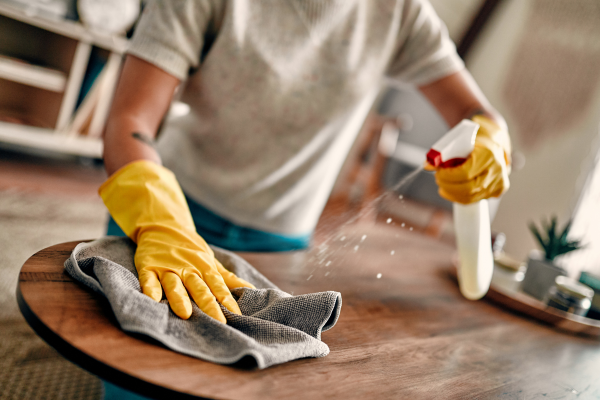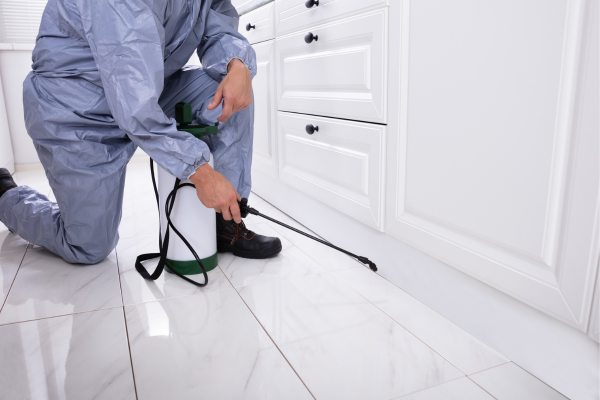Discovering mice in a home is an unsettling experience for any homeowner. These small, unwelcome guests can cause a multitude of problems, ranging from property damage to health risks. Therefore, it’s crucial to address this issue promptly and effectively. This article offers comprehensive strategies for getting rid of mice in a household setting. From traditional methods to innovative solutions, the focus is on providing practical, actionable advice that ensures these furry intruders are dealt with in a safe and efficient manner.
Contents
Use Mouse Traps

Mouse traps are a time-tested solution in the battle against rodent infestations. The market offers a variety of traps, including traditional snap traps, humane live catch traps, and advanced electronic traps. Each type has its unique mechanism and effectiveness. For instance, snap traps are known for their efficiency, while live catch traps are favored by those seeking a non-lethal approach. Electronic traps, on the other hand, offer a more modern, albeit expensive, solution. Selecting the right type of trap depends on individual preferences and the severity of the infestation.
Selecting the right bait and trap placement plays a crucial role in successfully capturing mice. Mice are particularly attracted to foods high in fat and sugar, making peanut butter an excellent bait choice. Placement is equally important; traps should be strategically located near walls, under furniture, or in areas with visible mouse activity. It’s essential to exercise caution and check traps regularly, disposing of captured mice safely and sanitarily. Remember, the effectiveness of traps not only lies in their design but also in their strategic usage.
Seal Entry Points

One of the most effective ways to prevent a mouse infestation is by cutting off their access to the house. Mice can enter through incredibly small openings, so it’s important to conduct a thorough inspection of the home. Common entry points include cracks in walls, gaps in windows or doors, and holes near utility pipes. Even small openings can be a gateway for mice, as they can squeeze through spaces as small as a dime.
After identifying potential entry points, the next step is to seal them effectively. This can be achieved using a variety of materials such as steel wool, caulk, or metal flashing. It’s essential to use materials that mice cannot chew through, as they are known to gnaw on softer materials like wood or rubber. Regular maintenance checks are also important to ensure that new openings do not appear over time. A home well-sealed against mice not only prevents their entry but also discourages them from attempting to infiltrate in the first place.
Maintain Cleanliness And Remove Food Sources

The presence of food sources is a major attractor for mice in homes. These rodents are drawn to areas where food is readily available, so maintaining a high level of cleanliness is essential. This includes regularly sweeping floors to remove crumbs, keeping food in sealed containers, and promptly addressing spills or food residues. Additionally, proper garbage management, such as using bins with tight-fitting lids and disposing of waste regularly, can significantly reduce the likelihood of attracting mice.
Further, it’s important to eliminate clutter and reduce hiding spots where mice might nest. Areas like attics, basements, and garages should be kept tidy and clutter-free. Regular inspections of these areas for signs of mice, such as droppings or gnaw marks, can help in early detection and prevention. By creating an environment that is less inviting to mice, one can greatly reduce the chances of an infestation.
Use Natural Repellents

Natural repellents offer a non-toxic and eco-friendly way to deter mice from entering homes. One popular choice is peppermint oil, which emits a strong scent that mice find unpleasant. Cotton balls soaked in peppermint oil can be strategically placed around potential entry points and areas of mouse activity. However, it’s important to refresh these cotton balls regularly to maintain their effectiveness.
Another option is the use of mothballs, though they should be used with caution, especially in homes with children and pets. Ultrasonic devices are also available, emitting a high-frequency sound that is distressing to rodents but inaudible to humans. While the effectiveness of these devices can vary, they provide a humane option for those seeking to avoid traps or poisons. It’s important to note that these natural methods may work best as part of a broader integrated pest management strategy.
Adopt A Cat Or Use Predatory Scents

Cats are natural predators of mice and their presence in a home can act as an effective deterrent. The scent of a cat alone can be enough to discourage mice from settling in. For those who are able to and interested in pet ownership, adopting a cat can be a dual-purpose solution, offering both companionship and a natural method of pest control.
For those who cannot or choose not to have a cat, using scents that mimic predators can also be effective. Products are available that replicate the scents of animals like cats or foxes, which can intimidate mice and deter them from entering an area. It’s important to apply these scents regularly to maintain their effectiveness and strategically place them around the home for maximum impact.
Professional Pest Control Services

There are situations where the severity of the infestation necessitates professional intervention. Pest control services offer expert knowledge and have access to more advanced and potent methods of eradication. Their services often include a thorough inspection of the home, identification of the infestation source, and a customized plan for mice elimination and prevention.
Professional pest control can provide a long-term solution, especially in cases where DIY methods have been unsuccessful. These services often offer follow-up visits and maintenance plans to ensure that the mice do not return. While this option can be more costly, it offers peace of mind and a level of expertise that can be crucial in dealing with significant infestations.
The Bottom Line
Effectively getting rid of mice in a home requires a multi-faceted approach. From using traps and sealing entry points to maintaining cleanliness and considering natural repellents, each strategy plays a critical role in addressing the problem. In some cases, the assistance of professional pest control services might be necessary. Remember, the key to success lies in being proactive, persistent, and adapting strategies to suit the specific situation. By following these guidelines, homeowners can effectively manage mouse infestations and maintain a peaceful, rodent-free living environment.


